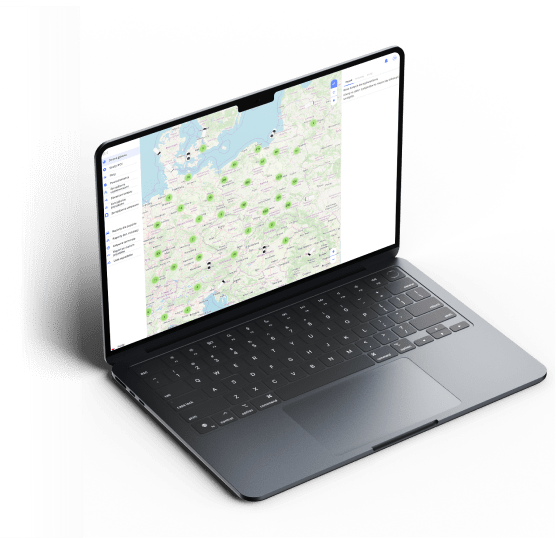SellTracking
SellTracking

Company description
The SellTracking system is a tailored solution for the company Vehis, that tracks the location of vehicles thanks to GPS modules installed inside of them. This system is exceptionally useful for the monitoring of vehicles and fleets. With SellTracking, information on the location of leased vehicles is shared live with both clients and company employees.
Project description
The company Vehis decided to migrate their stand-alone environment to a Kubernetes (k8s) based one. This decision resulted from the need to improve the efficiency and scalability of the existing system. The whole infrastructure of the SellTracking system was not efficient enough for this amount of vehicles. To improve the efficiency and ensure the stability of the system, the company decided to migrate to stronger physical servers and to implement Kubernetes for the use of RKE2 distribution.
Project goals
To improve the efficiency and stability of the SellTracking environment thanks to the migration to Kubernetes
To ensure the scalability of the infrastructure along the increasing demand
To ensure availability of the service for clients thanks to the migration to Kubernetes
Kubernetes
A key element of the project was building the architecture of the Promox cluster on physical servers. The infrastructure is composed of 6 virtual machines and 3 clusters. The key components of the cluster were 3 master nodes, 3 worker nodes, and 3 database nodes, operating independently outside of the cluster.
The management of the data base became a priority, and this is why it was decided to use the PostgreSQL distribution, Patroni. This not only ensured high availability but also data integrity. Data security and redundancy was strengthened with the launch of two database instances that were running in redundant mode. Additionally, 3 ETCD servers served as a management instance, monitoring data synchronization and the master role.

Microservices architecture
The architecture of microservices relies on the parallel actuation of several replicas, which ensures high availability and integrity of the system. Implementing microservices in several replicas ensured higher availability of the application. Even in the case of failure of one of the servers, the remaining replicas continue to work, which minimizes the risk of downtime.
Challenges
While implementing Kubernetes, the Core Logic team faced several challenges, which impacted the migration process. Another challenge was the optimization of the infrastructure. The large number of orders during the migration caused the operations to queue up, which required quick and efficient actions. It is worth noting that Artemis was the queue system that was optimized due to the cluster launch and the adjustment of parameters to the hardware specification.
The migration of the application for fleet monitoring and car information display was a true challenge. Additionally, the urgent need for back-end and front-end migration was an additional technical and logistical challenge. Thanks to careful planning and preparation, migrations were done with special attention to detail, aiming to ensure a smooth transition and minimize disruption of services for customers and employees.
Results
- Kubernetes improved the efficiency and stability of the SellTracking environment.
- Kubernetes improved the efficiency and stability of the SellTracking environment.
- The implementation of Kubernetes enabled easier scalability of the infrastructure with the development of the company.
- The solution is based on the PostgreSQL database cluster from Patroni.
- The new infrastructure allows to process 1 000 000 frames per day, which contain information about vehicles.